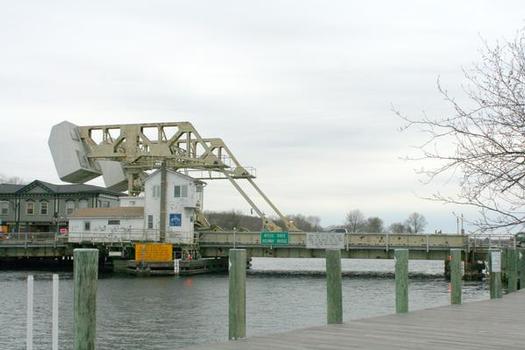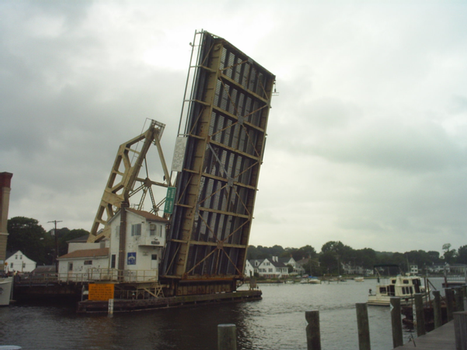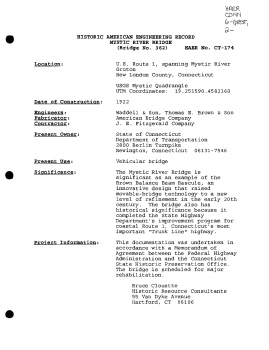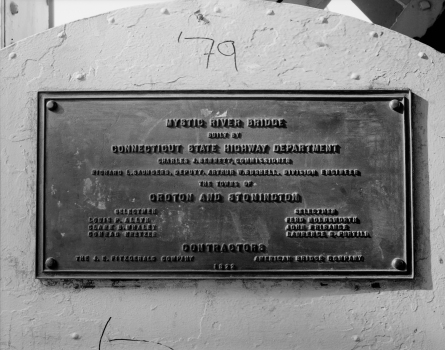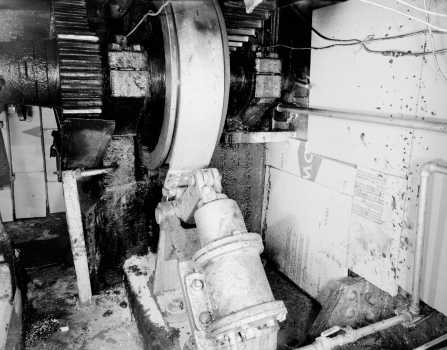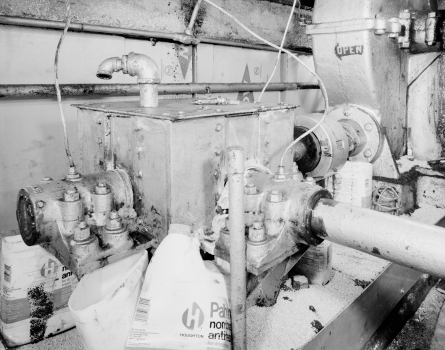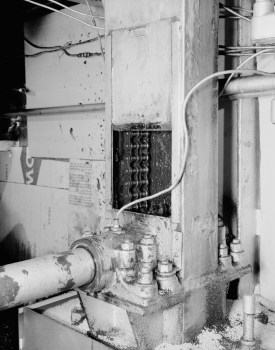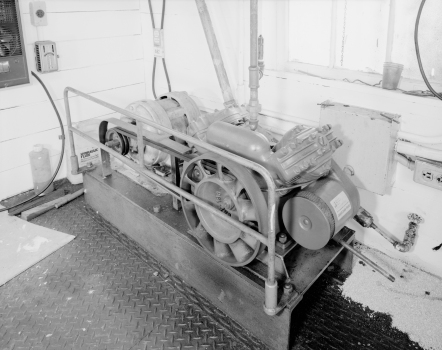General Information
| Completion: | 1920 |
|---|---|
| Status: | in use |
Project Type
| Structure: |
Draw bridge |
|---|---|
| Function / usage: |
Road bridge |
| Material: |
Steel bridge |
| Structure: |
Girder bridge |
Location
| Location: |
Mystic, New London County, Connecticut, USA |
|---|---|
| Crosses: |
|
| Coordinates: | 41° 21' 16.96" N 71° 58' 7.35" W |
Technical Information
Materials
| deck |
steel
|
|---|---|
| truss |
steel
|
Excerpt from Wikipedia
The Mystic River Bascule Bridge is a bascule bridge spanning the Mystic River in Mystic, Connecticut in the United States. It carries vehicle and foot traffic directly into the tourist district of town via 33 ft-wide (10 m) Main Street (U.S. Route 1).
History
The Strauss Heel-trunnion type bridge was designed by former Otis Elevator Company Chief Engineer Thomas Ellis Brown of New York and built in 1920 by the J. E. FitzGerald Construction Company of New London, Connecticut, according to its historical marker. Its movable span is 85 ft (26 m) wide, 218 ft (66 m) long, weighs 660 short tons (589 long tons; 599 t), and employs two 230 short tons (205 long tons; 209 t) concrete-filled counterweights. Until 1928, the bridge carried streetcars of the Groton and Stonington Street Railway.
It is operated by the Connecticut Department of Transportation and opens for approximately five minutes around 2,200 times per year, carrying an average daily traffic of 11,800. It is driven by two 1,400 pounds (640 kg) 40 horsepower (30 kW) direct current motors, and its span is greased and inspected every 100 openings or two weeks during the winter. From May 1 to October 31, the bridge opens hourly during daylight at 40 minutes past the hour and on demand. It usually raises to let sailboats and yachts pass under.
Text imported from Wikipedia article "Mystic River Bascule Bridge" and modified on November 9, 2020 according to the CC-BY-SA 4.0 International license.
Participants
Relevant Web Sites
- About this
data sheet - Structure-ID
20007920 - Published on:
29/01/2003 - Last updated on:
08/11/2020

